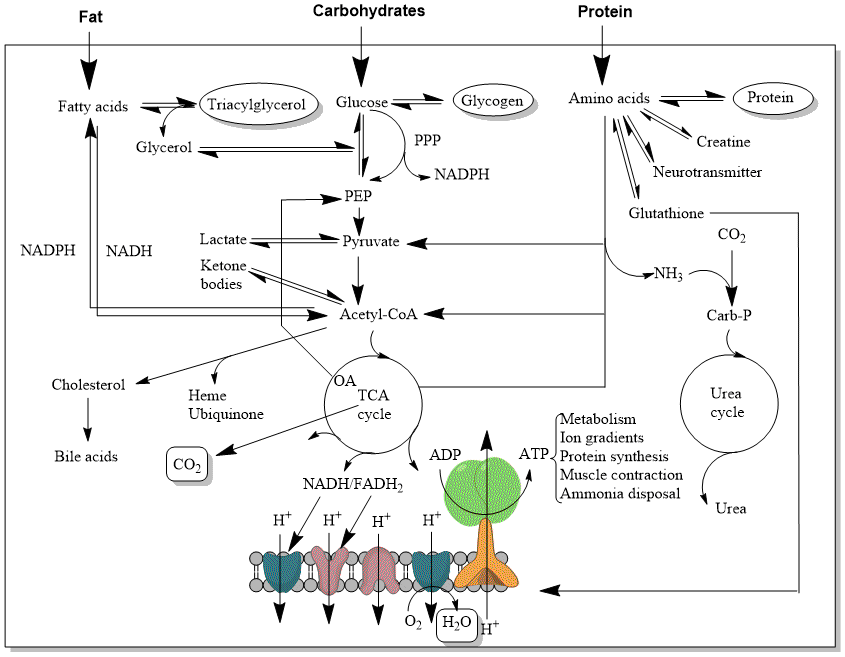Introduction to Biochemistry & Nutrition
The doctor of the future will give no medicine but will instruct his patients in the care of the human frame, in diet and in the cause and prevention of disease. Thomas Edison
Biochemistry and Nutrition are large scientific fields and huge textbooks are available for each subject, often more than 1000 pages long. Why is this online textbook different?
There are four theses that form the basics of this book:
- It is worthwhile to experience your own metabolism through exercise, diet and experiments.
- Diet and nutrition have to be understood through their underlying biochemical mechanisms not as dogmatic approaches.
- Metabolic diseases, such as diabetes, fatty liver disease and metabolic syndrome have to be understood through their underlying biochemical mechanisms. But even inherited diseases and cancer have significant metabolic underpinnings.
- Metabolism is fundamentally a supply and demand system that can be analyzed by quantitative approaches.
Watch this entertaining video to see an exciting application of these principles (Video credit: Ruben Meerman, The Mathematics of weight loss). It is a bit longer (20 min you won’t be bored), but also tells you why it takes so long to learn Biochemistry!
This textbook was developed from a one semester second year course where the emphasis lies on understanding metabolic biochemistry. The course material relates to personal experience, such as exercise, feeding and fasting. The book explains the underlying biochemistry of the feeding/ fasting cycle and follows the major nutrients and their fate in our own body. Where appropriate, exercise biochemistry is included, because it also relates to personal experience.
Some basic understanding of the organisation of a eukaryotic cell and the basic principles of chemistry are required to understand the material in this book.
Have you ever considered the following questions?
- Where does the weight go when you lose weight?
- Why are we eating about every 4 hours?
- What is the biochemical evidence for common diets, such as ketogenic diet or 5+2 diet?
- What should a person with type 2 diabetes eat?
- Why are sugar and fat considered “bad”?
- When should I exercise to burn fat?
These are some of the questions we will try to understand in “Biochemistry and Nutrition”. The course idea is that a thorough understanding of biochemistry and metabolism will allow you to make informed decisions in the area of nutrition and metabolic diseases. In this course we explore the use of the major nutrients in our own body, namely Carbohydrates, Fat and Protein. In each case you will look at digestion, absorption and metabolism. You will discover how nutrients are used to generate energy or to make new tissues and cells. You will also learn how nutrient use and storage is regulated and how different organs work together to provide our body with energy and building blocks. Note that our food is derived from plant cells or animals cells and therefore has the very same building blocks that are used to make our own cells. Throughout the course we use a map to understand the connection between the metabolism of different nutrients. This map will look confusing initially but will become familiar as we go through each nutrient.

The main goal of this course is an understanding of biochemistry and nutrition that relates to personal experience. The course tries to generate an understanding of nutrition that is based on principles of biochemistry and not on dogmatic approaches to certain diets.
